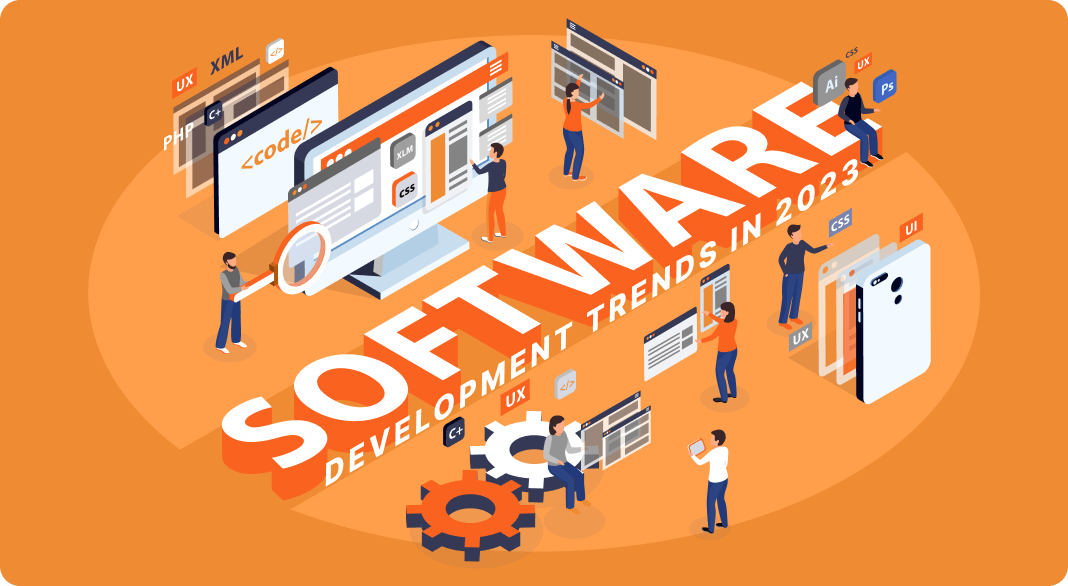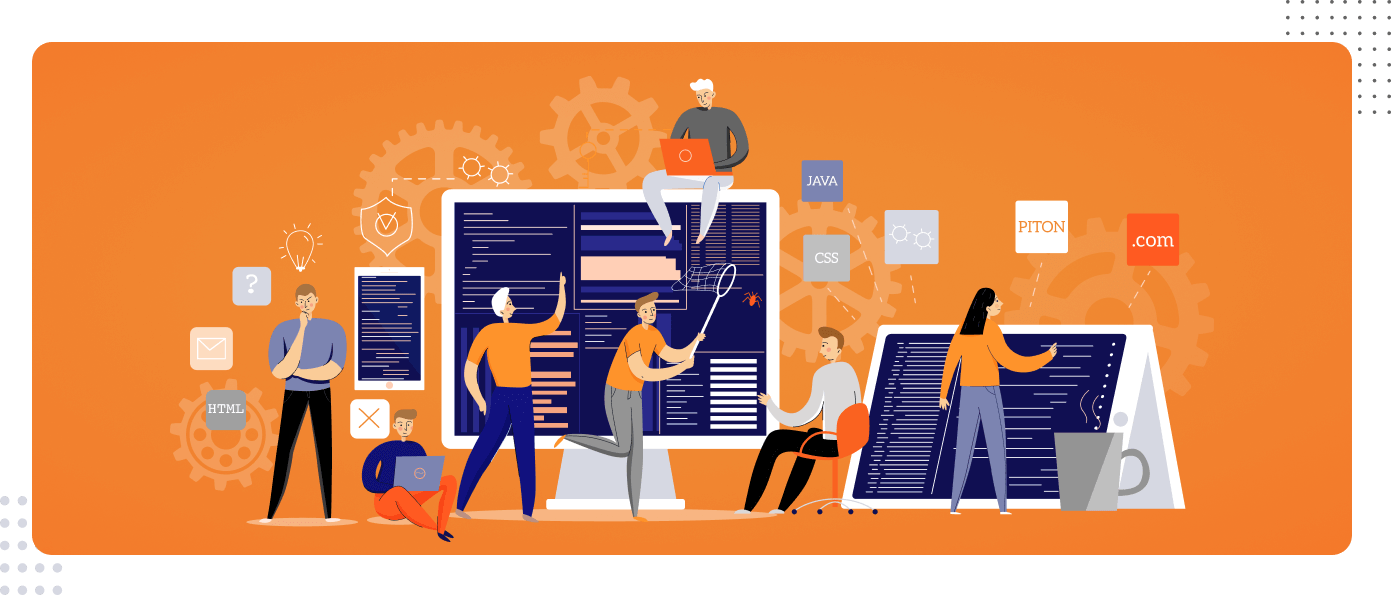Discover ImageBind AI Perception: Revolutionizing Multimedia
Immerse yourself in ImageBind AI Perception! It merges images, videos, and 3D data to craft captivating 3D scenes. From animation to...


The global COVID-19 pandemic has caused a significant shift in businesses worldwide, leading to accelerated digital transformation and a greater reliance on software solutions. This blog post delves into the impact of the pandemic on businesses, highlighting the challenges they faced and the subsequent need to prioritize digital transformation initiatives. It explores how companies have adapted to contactless services, migrated to the cloud, and embraced DevOps practices to navigate the new normal.
This blog post examines accelerated digital transformation and the increased reliance on software solutions. The post explores the adoption of contactless services, cloud migration, and DevOps practices as key strategies for navigating the pandemic-induced changes. Furthermore, it analyzes the current state of the software development industry, highlighting the challenges it faced and its resilience in bouncing back.
As we approach 2023, the top custom software development trends continue to evolve and shape the industry's landscape. With rapid advancements in technology, businesses must stay ahead of these changes to maintain a competitive edge. In this blog post, we will uncover the top ten custom software development trends that are expected to dominate in 2023.
Web development has come a long way since the inception of the internet. With each passing year, new technologies emerge that change how we interact with websites and web applications. One such technology that is gaining popularity in recent years is Web 3.0. This next generation of the web allows users to gain authority over their data through decentralized storage.
No Centralization: In contrast to its predecessor (Web 2), platforms on Web 3 will not be centralized; this means that data won't be under any single authority or database's control, which reduces hacking risks.
User Incentives: A significant benefit for both users and businesses is that they get paid for sharing their data with various platforms, incentivizing them to share their information transparently.
Better Insurance Sector Management: Web 3.0 transparency and decentralization feature can help solve some issues currently faced by insurance sectors like incomplete customer information, false claims settlements, etc.
The time when blockchain technology was only associated with cryptocurrency is gone. The distributed, decentralized systems of blockchain provide an exceptional level of security and transparency for various transactions and can be applicable to many business sectors beyond fintech. Here are some examples
With the advancement of AI technology, software developers are increasingly utilizing TensorFlow. Its comprehensive libraries, tools, flexibility, and user-friendly nature facilitate the creation of sophisticated AI-based models and algorithms. Its open-source nature allows for easy customization and integration with other t platforms.
TensorFlow has a wide range of applications in various industries, including:
TensorFlow is a powerful tool that enables developers to create cutting-edge AI solutions, which are made even more accessible due to its scalability, flexibility and community support. TensorFlow's versatility, capacity to expand, and backing from its network render it a favored option for businesses and coders.
In the world of complex application development, Infrastructure as Code (IaC) is a game-changer for DevOps teams. By automating configuration and management processes using code, businesses can eliminate bottlenecks and dependencies caused by traditional methods.
Using Infrastructure as Code (IaC), companies can establish a single reliable code base to guarantee secure app deployment and identify any discrepancies in the code for quick vulnerability resolutions. IaC automates recurring tasks, freeing up time for more significant responsibilities. With IaC, scaling infrastructure becomes effortless without requiring manual intervention.
Low-Code/No-Code (LCNC) development platforms are revolutionizing software development by enabling non-coders to create custom solutions without traditional coding skills. Through graphical user interfaces and configuration, LCNC facilitates rapid application development. LCNC platforms empower individuals without extensive coding knowledge to develop tailored software solutions, helping businesses build applications faster and more efficiently.
These platforms automate many of the manual tasks associated with software development, including testing and debugging, allowing coders to focus on more complex projects. The field of software engineering is moving towards simplification through low-code/no-code (LCNC) approaches to creating digital solutions. These programming environments have enormous potential because they allow people with limited or no coding experience to turn their ideas into reality.

The software development industry has seen a rise in hybrid app development over the past few years. With businesses looking to create feature-rich and high-performing apps for multiple platforms, hybrid development has become an increasingly popular choice.
When it comes to building cross-platform mobile applications, React Native is undoubtedly the most preferred framework among developers worldwide. Developed by Facebook, React Native leverages JavaScript which makes it an easy-to-learn and user-friendly tool even for beginners.
Besides its ease-of-use, what sets React Native apart from other frameworks is its reliability and ability to deliver near-native performance on both iOS and Android devices. It enables developers to build complex UI components quickly while ensuring seamless integration with third-party plugins, making their job much more comfortable than ever before!
The Internet of Things (IoT) has been a buzzword for years, but its impact on software development trends continues to grow. A significant trend in IoT for this year is the enhancement of digital twin technology. A digital twin refers to a virtual replica of physical objects or systems that can be used for experimentation and optimization without disrupting real-life operations. This technology enables businesses to simulate potential issues in supply chains or manufacturing processes, allowing them to proactively solve problems before they occur. Creating digital twins offers several benefits such as:
IoB involves collecting data about people's lives and behavior patterns from various sources, such as social networks, face recognition systems, and wearable devices. In 2023 following application of IoB have been recorded
The implementation of 5G connectivity is expected to be one of the top trends by 2023. This is primarily because it enables companies to fully utilize IoT ecosystems. Initially launched in 2018, the superior fifth-generation standard for mobile connectivity, known as 5G, is now becoming mainstream and promising several benefits for IoT solutions:
Low latency
High speed
Widespread coverage
Energy efficiency
With 5G networks, businesses can increase their number of connected devices and derive greater value from them. For example, IoT and 5G are driving digital transformation in areas such as municipalities, healthcare, logistics, manufacturing and more. In particular, 5G has great potential for enabling remote surgery or maintenance of industrial machinery in hazardous conditions. As a result, many companies will be able to offer new services based on real-time data processing from numerous sensors.
The COVID-19 pandemic has accelerated the shift towards online shopping, making it more important than ever for businesses to provide customers with an engaging and immersive experience. This is where augmented reality (AR) comes in. AR enables customers to interact with products virtually, providing them with a detailed understanding of product features and benefits. This technology not only enhances the customer experience but also increases conversion rates by reducing returns due to inaccurate size or color estimations. In fact, according to a survey conducted by Retail Perceptions, 61% of consumers prefer retailers that offer AR experiences over those that do not.
Outsourcing has become the largest segment in the IT services market in terms of revenue. According to Statista, global spending on IT outsourcing services amounted to $92.5 billion U.S dollars in 2019 and is projected to reach $413 billion by 2027. Many businesses outsource software development because they lack the resources or expertise needed for certain projects or technologies, such as cloud computing, blockchain technology, and AI-assisted coding tools.
TransData Digital is an international software provider with almost two decades of hands-on experience in various domains. We develop custom software products for CloudMedx and large corporations worldwide. Our key expertise includes eCommerce, embedded, web, cloud, mobile app development, DevOps, and QA services.
Looking ahead to 2023, it's crucial for businesses to stay up-to-date with the latest trends in custom software development. These trends include Web 3.0, blockchain applications, TensorFlow for AI innovation, IaC for efficient management, LCNC development platforms, React Native for hybrid development, IoT advancements, IoB insights, 5G connectivity and augmented reality in eCommerce. By adopting these trends into their operations, businesses can gain a competitive advantage by improving customer experiences and optimizing operations to drive growth. Choose TransData Digital as your experienced software development provider for tailored solutions in areas such as eCommerce, cloud computing and mobile app development. With expertise in AI algorithms DevOps and QA services TransData Digital is your trusted partner for successful software projects. Stay ahead of the curve and unlock your business's full technological potential with TransData Digital.
In 2023, key custom software development trends include Web 3.0 emergence, decentralized applications powered by blockchain, cloud computing advancements, Python's dominance in programming languages, TensorFlow enabling AI innovation, Kubernetes adoption growth, Infrastructure as Code (IaC) management solutions, DevSecOps integration and Low-Code/No-Code platforms accelerating development.
IT industry trends for 2023 encompass a focus on data privacy and security measures like zero trust architecture, increased reliance on edge computing to reduce latency issues with IoT devices and remote workforces adopting hybrid working models supported by collaboration tools.
The next big thing in software development is likely to involve advances within artificial intelligence (AI), machine learning (ML), quantum computing or even new paradigms like neuromorphic computing that aim at mimicking human brain processes for more efficient problem-solving capabilities
Immerse yourself in ImageBind AI Perception! It merges images, videos, and 3D data to craft captivating 3D scenes. From animation to...
Discover how Amazon S3 can be used to host videos for streaming services, and how pre-signed URLs with time limits can provide secure...
In-house or outsourcing? Which is better for software development? Discover the pros and cons, and explore the global talent marketplace...
remote software developers outsourced software development software developers